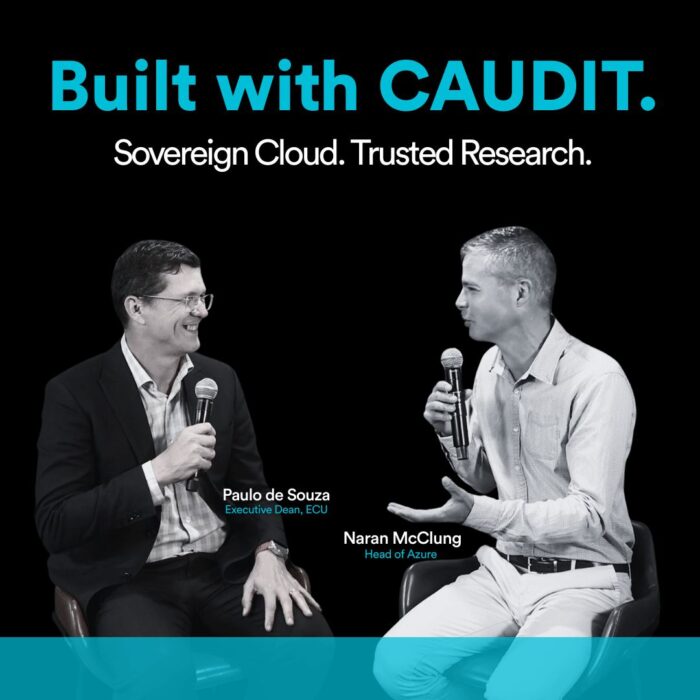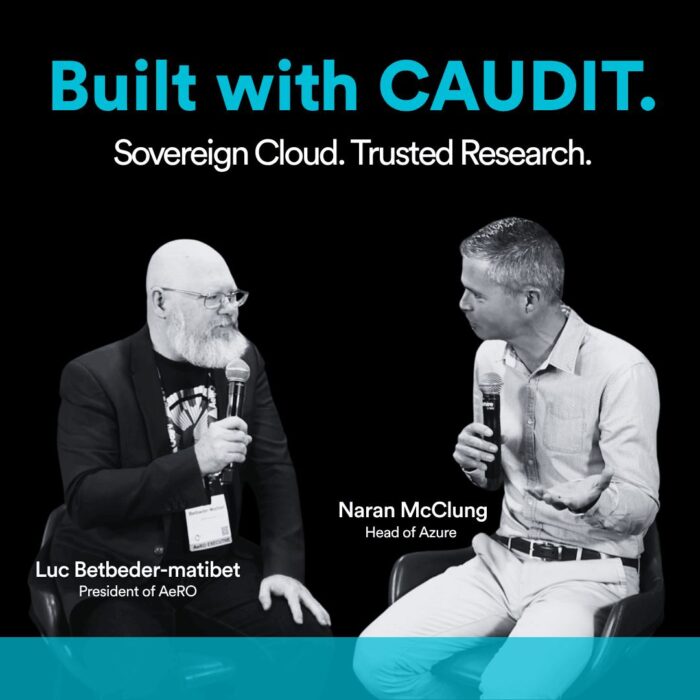AI, GPUs and the Future of Australian Research: Insights from AeRO 2025
Leaders from across the research, education and technology landscape gathered in Australia to explore how data, AI and cloud are reshaping scientific discovery at the Australian eResearch Conference 2025. Representing Macquarie Cloud Services, Naran McClung sat down with Derek Knox from Dell Technologies for a fast-paced conversation on the energy of the event, the evolution of research workloads, and the critical role of sovereign cloud infrastructure.
A Room Full of Energy and Innovation
AeRO 2025 brought together Australia’s top researchers, data specialists, and tech practitioners, all focused on unlocking breakthroughs through digital capability. As Naran and Derek noted, the atmosphere was electric. Having kicked off at 7am and rolling into the lunch rush, the conference floor was buzzing with conversations on AI adoption, GPU-driven experimentation, and emerging data challenges.
A highlight of the event was keynote speaker Paulo from Edith Cowan University, whose background includes work on NASA’s Mars Rover project. His stories fascinated the audience, from the scientific hunt for microbial evidence on Mars to the surprising engineering feats behind rover landings. (Yes, the rover really does bounce its way across the Martian surface on giant airbags.)
AI and GPU Adoption in Research is Surging
A recurring theme throughout the conference: researchers are embracing AI and demanding more computational power than ever before. As Derek explained, GPU usage in universities has grown from around 20–30% years ago to more than half of workloads today. This surge isn’t driven by hype, it’s driven by measurable research outcomes.
GPUs enable researchers to run more models, more simulations, and more experiments in significantly less time. For data-heavy fields, astronomy, genomics, climate science, materials engineering, the ability to quickly process and interpret massive datasets is becoming essential to progress.
Data at Petabyte Scale Requires Purpose-Built Infrastructure
With petabytes of data being generated across research institutions, the infrastructure behind the scenes matters more than ever. That’s where the partnership between Macquarie Cloud Services, Dell Technologies and CAUDIT plays a vital role.
Together, Macquarie Cloud Services and Dell Technologies have built a purpose-built sovereign cloud environment designed specifically for research workloads, supporting high-performance storage, GPU acceleration, and compliance needs across universities, government and defence.
This sovereign approach ensures data stays within Australia, meets strict governance requirements, and is optimised for the unique demands of scientific research.
AI Is Not Just a Trend, It’s an Enabler
Across the event, one message was clear: AI is no longer a peripheral tool. It’s embedded into research workflows and providing real ROI. Whether it’s automated data processing, faster modelling, or powering entirely new types of analysis, AI is accelerating discovery in meaningful ways.
As Naran summarised, eResearch and AI “go very well together”, and the sentiment across AeRO 2025 confirmed it. Researchers are optimistic, engaged, and pushing the boundaries of what’s possible.
Continuing the Conversation
AeRO 2025 showcased not just the technology shaping modern research, but the collaboration driving the sector forward. With partners like Dell Technologies and platforms like CAUDIT Cloud, Macquarie Cloud Services is committed to helping researchers innovate with speed, confidence and sovereignty.
Full Transcript
Here we go again. My name’s Naran McClung. I work for Macquarie Cloud Services. Who am I here with
Hi, my name’s Derek Knox. I work with Dell Technologies.
And we are at the Australasia e Research Conference, 2025. This place is full of research minded people. I don’t know, there’s a lot of energy here. How do you feel about it?
It’s a lot of energy. We’ve joined at the lunchtime rush.
Yes.
After a number of sessions. We started at seven o’clock today, it’s now midday. The atmosphere is electric, which you would imagine to be in a researching environment. But this is the peak of Australian researchers who use AI
Yes.
And use it in the production of what they actually do.
Right now, I spoke to Paulo. He was one of the keynote speakers from Edith Cowan University. He was on the Rover Project with Mars and NASA as well, which I found super fascinating.
Did you mention the pyramid?
Listen, I may have mentioned some structures.
I think they’re trying to figure out whether there’s microbes and water and stuff on Mars. I think they need to go straight to the alien structures.
Yep.
That’s what interests me.
Total recall.
Right. I asked him that question directly and he said, if he told me he’d have to kill me, I was ready for that, and that’s when the conversation stopped, which says that he’s, he’s holding onto something and he’s not telling the full story.
Well, they’d have to actually prove that it was actually there.
Right.
The thing I found the most amazing about his speech was. They land the mouse rover on a big, giant bunch of balloons.
That’s right.
And it bounces for a kilometer. 36 times that thing bounced and it still landed okay. And yet I can’t get my car outta the garage without getting a flat tire.
I think if your car had those big blow up things around it, you could probably just bounce your way out of it and you wouldn’t have to concentrate at all.
Yep.
Right. Alright, good. AI seems to be the conversation here, as well as data. Now, the Mars Project, he says they’ve got, you know, decades of data to work through. They’ve got PhD students that are pouring over it for all their projects, and yet AI has a role to play and certainly there’s a lot of conversation in market around return on investment. I think AI in this e Research use case,
Yep.
Seems to go very well together. And nobody said a bad word about it.
Yep.
So when you looked at this market, say 20 years ago or 10 years ago, um, AI’s been around for quite some time, but just at this extent. The use of GPU would’ve been maybe 20, 30%. It’s now above 50% in the universities and research sector. That’s because they’re getting the most return of investment in research by being able to do the most experiments as fast as possible.
Yes.
By using GPU. GPU is just a lot of memory and a lot of, um, processor as fast, doing multiple predicted modeling and that is what they can do in here. So research is being made better and it’s proven by GPU.
I love that. Well, look, MIT said that the best use cases are back office automation. I think if e Research is dealing with petabytes of data domain specific use cases, that seems spot on to me and I know Dell Technologies, a strategic partner of ours, underpinning our CAUDIT cloud offering, I mean, that’s what it’s all about.
Yep. When you look at what’s happening in the industry, so people have to put this data somewhere, people actually have to process the data somewhere. They didn’t have many choices before on how to do it.
They can put it under their desk, they can put it in someone else’s cloud -somewhere with Caudit cloud, what’s been built is a purpose-built environment, made for research, made for GPU and storage. Sovereign in Australia, and that’s really important because the more and more, government and, defense and places like that what sort of IT, the better.
And that’s what we built in partnership with CAUDIT at Macquarie to service this market.
Good. I love that. Well look, we’re gonna keep talking to people , and we’re gonna obviously attend some more sessions today, so I think we’re gonna learn more. And, uh, let’s keep going.
Thank you for inviting me along.
You’re very welcome.




